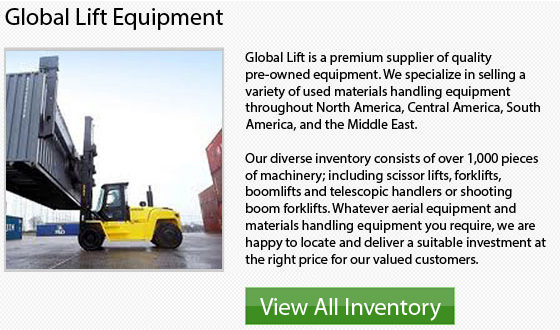
Here are add-ons which are helpful for narrow aisle forklifts:
Side shift: Side shift is an option which permits the lateral movement of the load without having to move the model. This enables loads to be accurately placed.
Tilt mast: The optional tilt mast enables the forks to shift both backwards and forwards. This is great in cases where loads aren't entirely level. In order to gain greater stability while moving a truck that is loaded, the mast can be tilted backwards.
Extendable forks: The option of extendable forks helps the "reach" of the lift truck to extend for stacking pallets one in front of the other, known as "double-deep" loading.
Operator platforms: Operator platforms enable some NA forklifts to lower and raise the operator while the forks are being raised or lowered. This offers utmost control and visibility while dealing with loads at heights of 6 to 9 meters.
Lift Truck on a Ramp
Drivers need to be well taught and should be assessed and qualified. It is really vital for anyone utilizing a lift truck to be very knowledgeable regarding safety regulations and concerns. Drivers should know how to adjust in cases where the load weight alters the center of gravity or on uneven surfaces. Safety rules include safely using a lift truck on a ramp, which is always occurring as the driver would typically need to drive up and down ramps to load and unload containers.
Suggestions for Utilizing a Forklift on a Ramp
1 Drive at slow speeds when approaching a ramp and while driving down and up the ramp. The risk of mishaps is increased when driving fast since this could upset the machine's center of gravity.
2 While not carrying a load, drive the forklift in reverse when moving up an incline on a ramp.
3 When moving down an incline on a ramp with no load, drive forward.
4 While moving up or down a ramp while carrying a load, tilt the forks back slightly to shift the load's center closer to the front of the machine.
5 In order to make the load more steady, drive forward up a ramp when carrying a load.